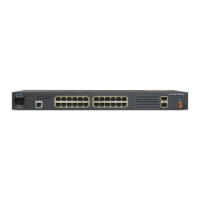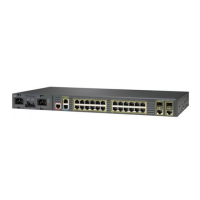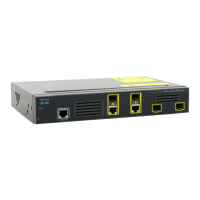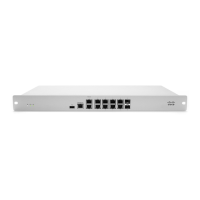33-29
Cisco ME 3400 Ethernet Access Switch Software Configuration Guide
OL-9639-07
Chapter 33 Configuring QoS
Configuring QoS
This example shows how to configure bandwidth and queue limit so that out-class1, out-class2,
out-class3, and class-default get a minimum of 40, 20, 10 and 10 percent of the traffic bandwidth,
respectively. The corresponding queue-sizes are set to 48, 32, 16 and 272 (256-byte) packets:
Switch(config)# policy-map out-policy
Switch(config-pmap)# class outclass1
Switch(config-pmap-c)# bandwidth percent 40
Switch(config-pmap-c)# queue-limit 48
Switch(config-pmap-c)# exit
Switch(config-pmap)# class outclass2
Switch(config-pmap-c)# bandwidth percent 20
Switch(config-pmap-c)# queue-limit 32
Switch(config-pmap-c)# exit
Switch(config-pmap)# class outclass3
Switch(config-pmap-c)# bandwidth percent 10
Switch(config-pmap-c)# queue-limit 16
Switch(config-pmap-c)# exit
Switch(config-pmap)# class class-default
Switch(config-pmap-c)# bandwidth percent 10
Switch(config-pmap-c)# queue-limit 272
Switch(config-pmap-c)# exit
Switch(config-pmap)# exit
Switch(config)# interface gigabitethernet 0/1
Switch(config-if)# service-policy output out-policy
Switch(config-if)# exit
You can configure and attach as many output policy maps as there are switch ports, but only three unique
queue-limit configurations are allowed. When another output policy map uses the same queue-limit and
class configurations, even if the bandwidth percentages are different, it is considered to be the same
queue-limit configuration.
Configuring QoS
Before configuring QoS, you must have a thorough understanding of these factors:
• The types of applications used and the traffic patterns on your network.
• Traffic characteristics and needs of your network. Is the traffic bursty? Do you need to reserve
bandwidth for voice and video streams?
• Bandwidth requirements and speed of the network.
• Location of congestion points in the network.
These sections describe how to classify, police, and mark incoming traffic, and schedule and queue
outgoing traffic. Depending on your network configuration, you must perform one or more of these
tasks.
• Default QoS Configuration, page 33-30
• QoS Configuration Guidelines, page 33-30
• Using ACLs to Classify Traffic, page 33-31
• Using Class Maps to Define a Traffic Class, page 33-34
• Configuring Table Maps, page 33-36
• Attaching a Traffic Policy to an Interface, page 33-38
• Configuring Input Policy Maps, page 33-38
• Configuring Output Policy Maps, page 33-52

